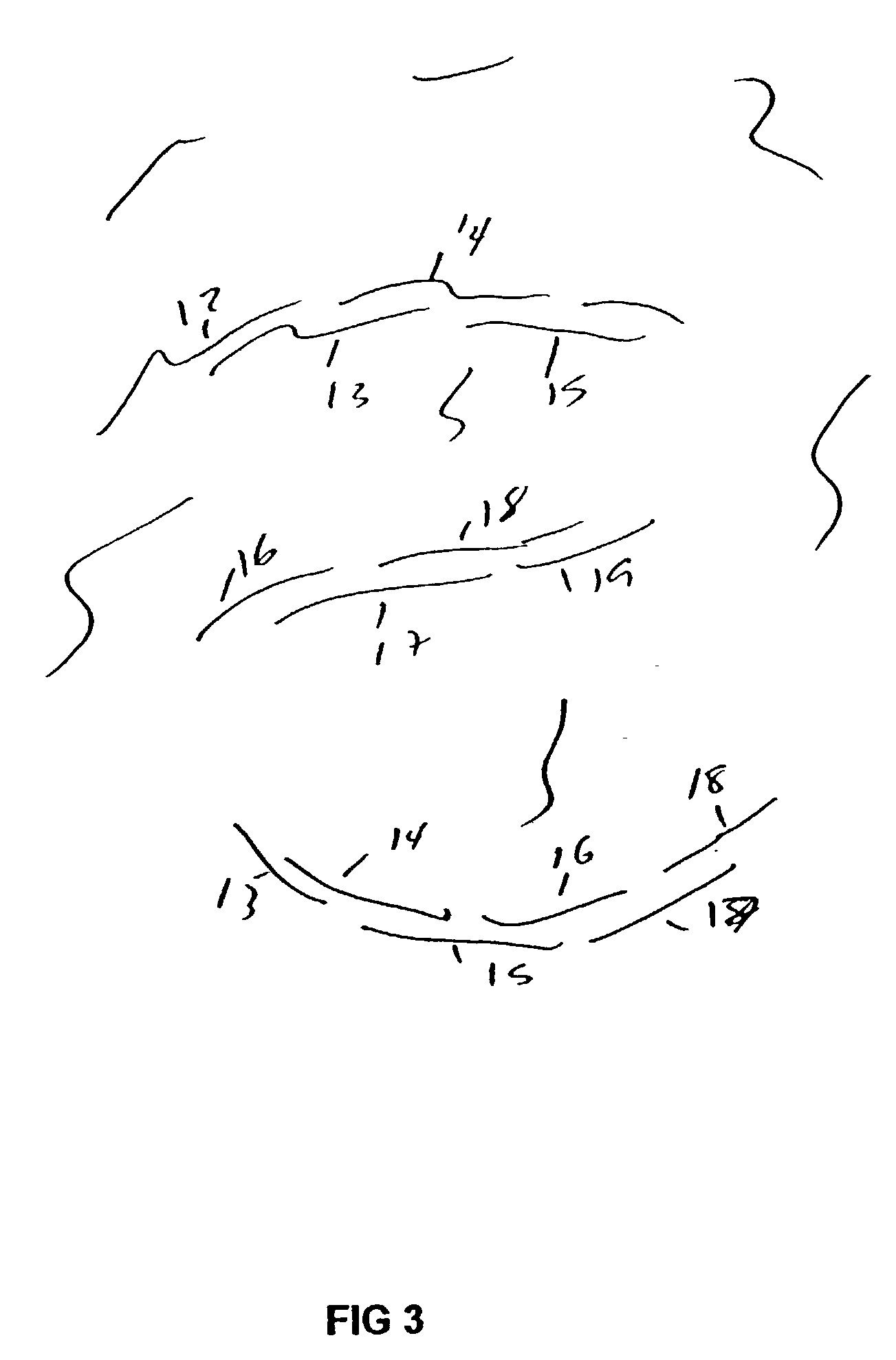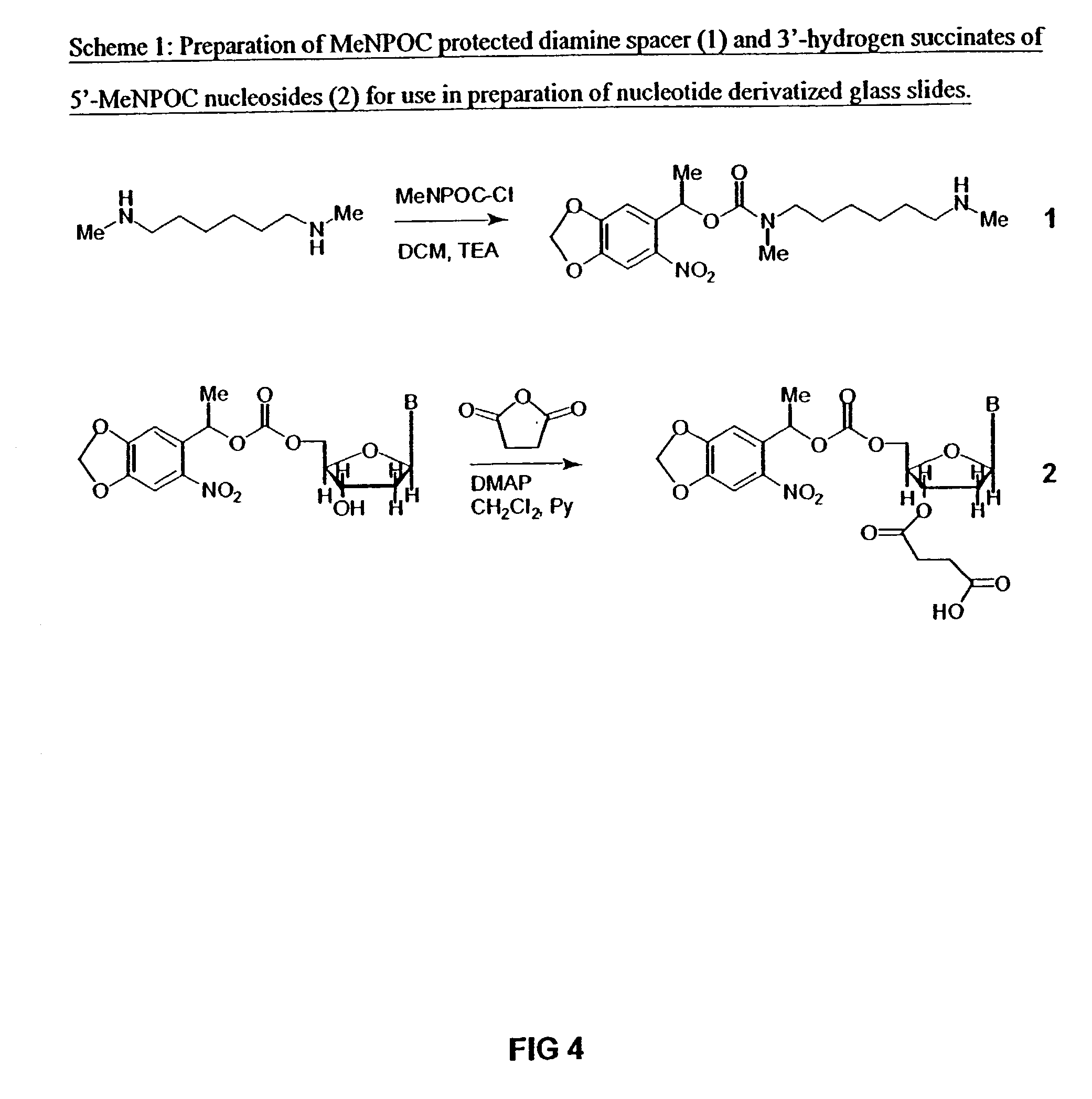Method for the synthesis of DNA sequences
a synthesis method and dna sequence technology, applied in the field of biochemistry, can solve the problems of difficulty in constructing any new desired larger dna construct, the density of the array that can be created, and the general impracticality of directly building large segments or assemblies of dna sequences larger than 400 base pairs
- Summary
- Abstract
- Description
- Claims
- Application Information
AI Technical Summary
Benefits of technology
Problems solved by technology
Method used
Image
Examples
examples
Prophetic
[0039]General Protocol for the Synthesis of Double Stranded DNA Sequences
[0040]Synthesis of Protected Diamine Linker and Photolabile Nucleotide Succinates
[0041]The mono MeNOPC protected diamine is illustrated as compound 1 in scheme 1 in FIG. 4. The 5-MeNPOC, 3′-OH-nucleotides with appropriately protected bases is described by McGall et al., Jour. Amer. Chem. Soc. 119, 5081–5090 (1997) are each converted to their 3-succinates (represented by structure 2 in scheme 1, FIG. 4) by treatment with succinic anhydride and dimethylaminopyridine (DMAP) in dichloromethane / pyridine solution.
Preparation of Slides and Oligonucleotide Synthesis (Base Labile Linker)
[0042]Microscope slides are prepared as described by Singh-Gasson et. al, Nature Biotechnology 17, 974–978 (1999) yielding a glass surface derivatized with a linker bearing a free alcohol at the terminus, depicted as structure 3 in scheme 2, FIG. 5). This slide is soaked in an 0.6 M solution of carbonyldiimidazole in dry dichlor...
PUM
| Property | Measurement | Unit |
|---|---|---|
| temperatures | aaaaa | aaaaa |
| density | aaaaa | aaaaa |
| size | aaaaa | aaaaa |
Abstract
Description
Claims
Application Information
 Login to View More
Login to View More - R&D
- Intellectual Property
- Life Sciences
- Materials
- Tech Scout
- Unparalleled Data Quality
- Higher Quality Content
- 60% Fewer Hallucinations
Browse by: Latest US Patents, China's latest patents, Technical Efficacy Thesaurus, Application Domain, Technology Topic, Popular Technical Reports.
© 2025 PatSnap. All rights reserved.Legal|Privacy policy|Modern Slavery Act Transparency Statement|Sitemap|About US| Contact US: help@patsnap.com



